This week on the Atlas Total Health Blog, we wanted to highlight a very commonly prescribed remedy for patients dealing with tight, stiff and achy necks – stretching. Many chiropractic and physical therapy offices recommend stretching, but what does it actually do and HOW does it help patients dealing with insufferable neck pain? Read all the way to the end of today’s article to find a helpful resource for you (or someone you know) who is currently dealing with neck stiffness so that you can get your life back!
6/8/2023
By: Alex Earl, DC
Spine Care Specialist
Do you find yourself constantly stretching your neck throughout the day?
If so, you’ve probably had the thought, “I should really stretch. My neck is SO tight.” While you might not be wrong in your thought process, it is important tos note there are some other factors involved. I feel obligated to share with you today, as I’ve had several conversations with patients this week who were dealing with neck pain and asked me about stretching.
Stretching is a widely utilized approach in managing neck pain, with numerous patients reporting its beneficial effects. However, there’s still much we don’t know about the underlying mechanisms behind stretching and its variable outcomes. In this article, we’ll delve into the fascinating realm of stretching for neck pain, drawing upon insights from several research studies highlighting the potential therapeutic benefits of stretching along with the underlying mechanisms of how stretching could also be painful.
The Enigmatic Nature of Stretching
Stretching has long been regarded as a potential solution for neck pain. Although it remains a popular practice, the scientific community is yet to fully grasp the intricate mechanisms by which stretching works. The benefits of stretching can be highly individualized, with some patients experiencing remarkable improvement while others notice little to no change or even exacerbation of symptoms.
One of the solutions, which we will discuss later on in this article, is that stretching improves flexibility. But does alone improve flexibility? What is flexibility? What is mobility?
For the purposes of this article, we will focus on the following definitions for flexibility and mobility.
Flexibility can be defined as the ability of a tissue to bend easily without breaking (Oxford Dictionary).
Mobility can be defined as the ability to move or be moved freely and easily (Oxford Dictionary).
Stretching is any exercise that involves elongating muscles to the point of feeling significant tension for at least several seconds (Ingraham).
An important point to make is that mobility can be evaluated either passively or actively. When a patient rotates their head side to side, they are actively assessing their mobility. When a provider evaluates the rotation of the neck side to side they are also assessing the mobility of the neck joints passively.
Another important note about mobility is that we typically use the term mobility in association with joints. We, typically, reserve flexibility for when we are discussing soft tissues, such as muscle, fascia, tendons, etc.
Flexibility can also be evaluated passively and actively, which can be a helpful method to determine if a patient is dealing with a joint issue or a muscle strain. We don’t know until we load it!
Why Does Stretching Help Some Patients?
- Increased Range of Motion: One potential explanation for the positive effects of stretching is its ability to enhance the range of motion (ROM) in the neck. Gentle and controlled stretching exercises can target specific muscles and soft tissues, promoting increased flexibility and joint mobility. For individuals with neck pain caused by muscle stiffness or restricted movement, stretching can be instrumental in restoring optimal range of motion. When coupled with chiropractic adjustments, the joint motion can achieve an even greater range of motion, thereby aiding in the reduction of pain, pressure and/or tension.
- Enhanced Blood Flow and Muscle Relaxation: Stretching also stimulates blood flow to the muscles, which can help reduce muscle tension and promote relaxation. By alleviating muscle tightness in the neck, patients may experience relief from pain and discomfort.
- Central Nervous System Modulation: Another theory proposes that stretching may impact the central nervous system, leading to a reduction in pain perception. It is suggested that stretching may activate certain receptors, causing the brain to release endorphins or other pain-relieving substances, thereby diminishing the sensation of neck pain.
Why Does Stretching Sometimes Cause Discomfort?
- Overstretching and Irritation: One of the reasons stretching can be uncomfortable or even painful is due to overstretching or irritating sensitive structures in the neck. Applying excessive force or holding a stretch for too long can strain muscles, ligaments, or nerves, leading to heightened pain and potential tissue damage. It’s crucial to approach stretching with caution and avoid pushing beyond your individual comfort level.
- Sensitization and Hypersensitivity: In some cases, individuals with neck pain may exhibit a heightened sensitivity to stretching stimuli. Factors such as previous trauma, chronic pain conditions, or central sensitization can contribute to an exaggerated response to stretching, leading to increased discomfort. Identifying these underlying factors is important in tailoring an appropriate stretching program for each patient.
In summary, stretching remains a common practice among chiropractors and other healthcare professionals in managing neck pain. While the exact mechanisms of how stretching works are not yet fully understood, several theories provide insights into its potential benefits. From increasing range of motion and promoting muscle relaxation to influencing the central nervous system, stretching holds promise for alleviating neck pain.
However, it is vital to recognize that stretching is not a one-size-fits-all solution. Individual responses to stretching can vary significantly, with some experiencing relief while others may find it exacerbates their symptoms. As healthcare providers, we must take an individualized approach, carefully assessing each patient’s needs and tailoring a stretching program that suits their specific condition.
By acknowledging the complexities surrounding stretching and its outcomes, we can better navigate the enigma of neck pain relief and provide our patients with the most effective and personalized care possible.
Real Life Case Study: “That stretch REALLY hurt my neck!”
Recently, one of our patients came to our Fort Oglethorpe office with neck pain. As part of our early stages of care, our staff went over several stretches she can do as part of her home exercise program. At her next appointment, she told our office that there was one stretch we gave her that increased her neck discomfort.
She was really worried and we discussed WHY this one particular stretch might increase her discomfort. We temporarily discontinued the stretch, but planned on bringing it back into a later stage of her plan of care, when she has reached a sufficient level of relief to tolerate the elevated amount of tension that particular stretch puts on the neck.
After helping this patient overcome neck pain, including a stretch that increased her pain, I wanted to write an article to help others just like her. If you currently have neck pain, you should consider stretching. However, if you experiencing any increase in your pain while stretching or shortly after, seek a qualified medical provider, like one of our neck specialists at Atlas Total Health!
Do this next!
- Share this Article with a Friend or Family member who currently has headaches and/or neck pain and is constantly stretching their neck!
- Call our office TODAY at (866) 668-0108 to book your next appointment!
- Keep an eye out for next week’s article!



